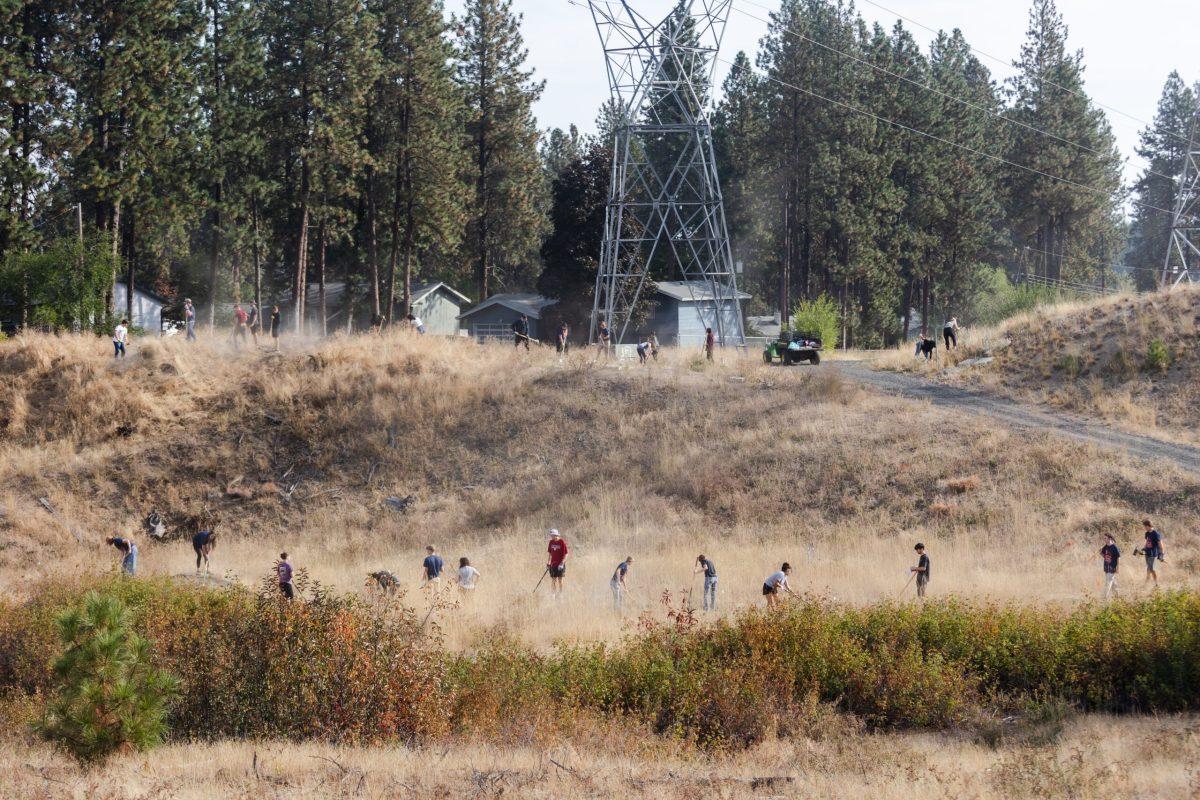Since I was a kid, I have been taught to ride my bike on the sidewalk, watch out for cars and wear a helmet. I assumed these principles were universal until I began driving. It was only then that I became aware of the number of bicyclists who use roadways rather than trails or sidewalks. The fact is that roadway cycling is becoming an increasingly common means of both transportation and recreation for numerous reasons.
The first reason is that bikes are much more cost-effective than a vehicle and require far less maintenance. This, coupled with the green benefits of riding a bike, make them extremely environmentally friendly. In fact, cycling not only limits environmental waste, but according to the League of American Bicyclists, it “contributes an estimated $133 billion a year to the U.S. economy … supports nearly 1.1 million jobs and generates $17.7 billion in federal, state and local taxes.”
There is also an extensive list of health benefits that result from riding a bike, which include, according to ExperiencePlus Bicycle Tours, “lower blood pressure, stronger bones, stress reduction, increased muscle strength, and improved lung function, digestion and joint flexibility.”
Despite these positive attributes, roadway bicycling brings several problems to the table.
Recently, especially while driving in Spokane, I have had encounters with bicyclists who slow traffic, are difficult to see, and who transition between the road and the crosswalk as they see fit. This not only irritates drivers, but is unsafe for the bikers as well. It is my opinion that bicyclists should be prohibited from traveling on roads used by motor vehicles and confined to sidewalks and/or bike lanes.
This seems at first to be a rather selfish viewpoint but, after further examination, it is as much for the efficiency of traffic as it is for the safety of the cyclists themselves.
Bicycles are considered vehicles and are allowed the same rights and responsibilities as a regular car when on the road. There are several problems with this. First, bicycles are considered cars only when they are on the road. Washington law dictates that “every person riding a bicycle upon a sidewalk or crosswalk must be granted all of the rights and is subject to all of the duties applicable to a pedestrian.” This ambiguity causes problems. If a biker transitions from the sidewalk to the road, their duties and responsibilities change drastically. For example, pedestrians retain right-of-way at crosswalks or intersections, but vehicles must yield. However, bikers frequently move from the road to the sidewalk, something a normal vehicle is prohibited from doing.
The transition, while slightly annoying to many drivers, is more importantly a safety concern for the biker. The ability to transition from the road to the sidewalk is unpredictable and reduces the visibility of the cyclist. According to the League of American Bicyclists Magazine, “Accidents at intersections accounted for … 74 percent of bicycle-motor vehicle collisions.”
Another concern is the flow of traffic. The average biker travels between 15 and 20 miles per hour. The average speed limit on a standard U.S. road (excluding freeways) is between 25 and 35 miles per hour, much faster than the normal bicyclist can travel. This difference means that bikers on the road slow traffic, which not only increases congestion but, according to the AAA Foundation, is one of the main reasons cited for road rage incidents.
These challenges would not pose so much of a problem if bicyclists were regulated appropriately. Currently, Washington has no state-wide law requiring a helmet for bicycle users. This leaves the decision up to individual cities, which has had huge consequences. According to the Children’s Safety Network, “Head injuries accounted for 62.6 percent of bicycle fatalities” in 2009. Instituting a helmet law would prevent a large number of fatalities, and stricter enforcement of laws regarding bicycles would not only generate revenue, but help keep riders safer. I know from personal experience that enforcement of bicycle laws is severely lacking at best, and I have never seen a cyclist being ticketed or reprimanded by a law enforcement officer.
In spite of these problems, there is a solution.
Removing bikers from the roadway and limiting them to bike lanes and sidewalks would not only free up the roadways for motor vehicles, but would provide bikers with a much safer area to ride. This would also give bikers the right of way at crosswalks and intersections, and clear up legal uncertainty about their role as pedestrians. Consider Whitworth’s campus, where bikers and walkers share sidewalks with little to no altercation. This practice would prove equally effective in the public sector, while allowing the benefits of cycling to flourish independently from traffic.












 Spokane?
Spokane?
Cory Marshall, '08 • Oct 13, 2011 at 6:29 pm
Well written article. Not sure what point “Strongly Disagree” was making. Shame they weren’t respectful enough to attach their name to their criticism.
I did not know that bikers were actually allowed on sidewalks. I had always heard that it was one of those laws that was illegal but nobody enforced. Down here in Portland, where there are specific bicycle lanes in the road all over it makes sense to treat bikes as vehicles and subject to the same rules of the road as automobiles. In a town like Spokane, however, bike riding tends to be more dangerous in the roads mainly because there are no separate lanes for them. Therefore riding on the sidewalk makes more sense.
As to strongly disagree’s point, what do you encounter more: People walking along the sidewalk or drivers on the road? Safety should be everyone’s concern, and the dangers posed by bicycling on the road (especially in a town like Spokane) far outweigh the dangers of bicycling on the sidewalk.
Rosie • Nov 10, 2011 at 4:41 pm
“Like”
Strongly Disagree • Oct 12, 2011 at 11:39 pm
A. My Dad has been ticketed for biking TOO FAST… Yes, OVER the speed limit… And no, it wasn’t a little 10 mph zone either.
B. Removing bikers from the road and onto the sidewalks just means that there’s more of a likelihood that the bikers will hit moms pushing their babies in strollers. Good call, bro. Pedestrians don’t matter, right? Let’s just tell them to stop walking.